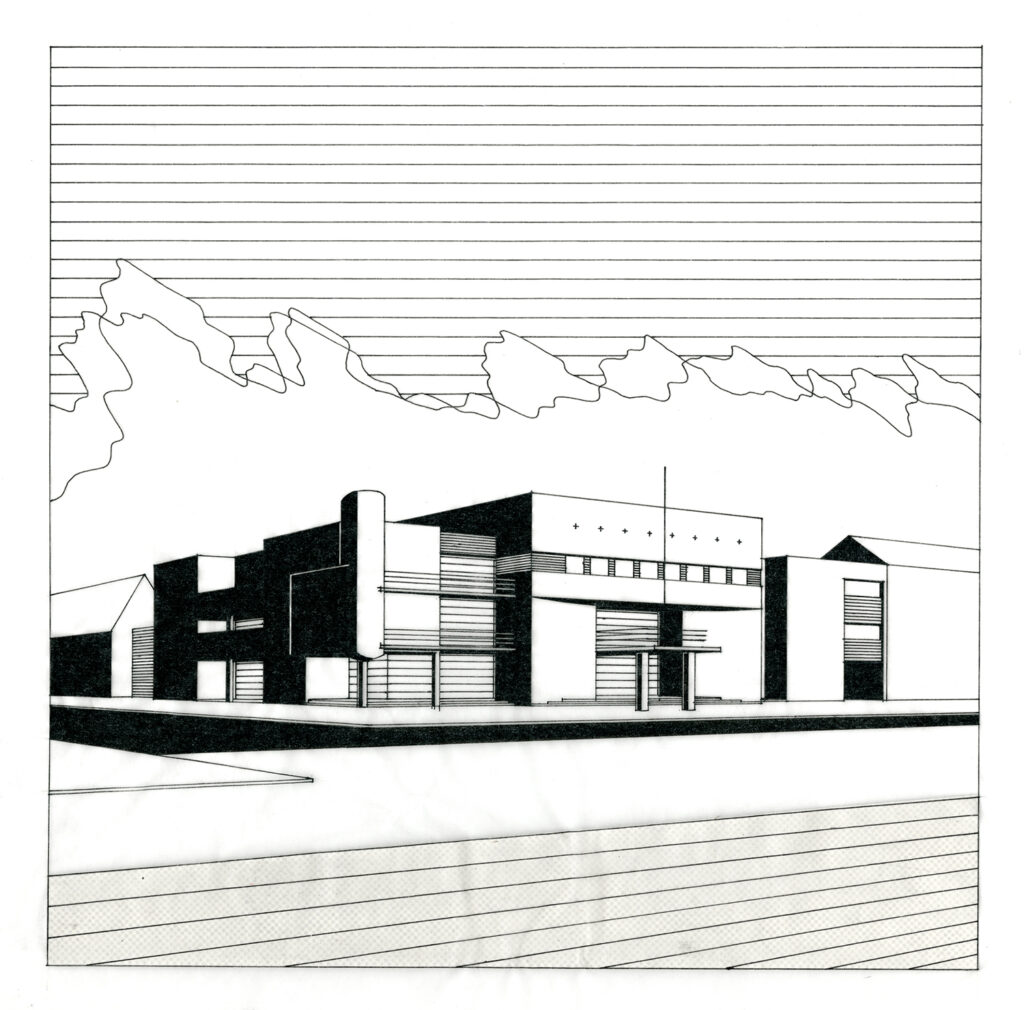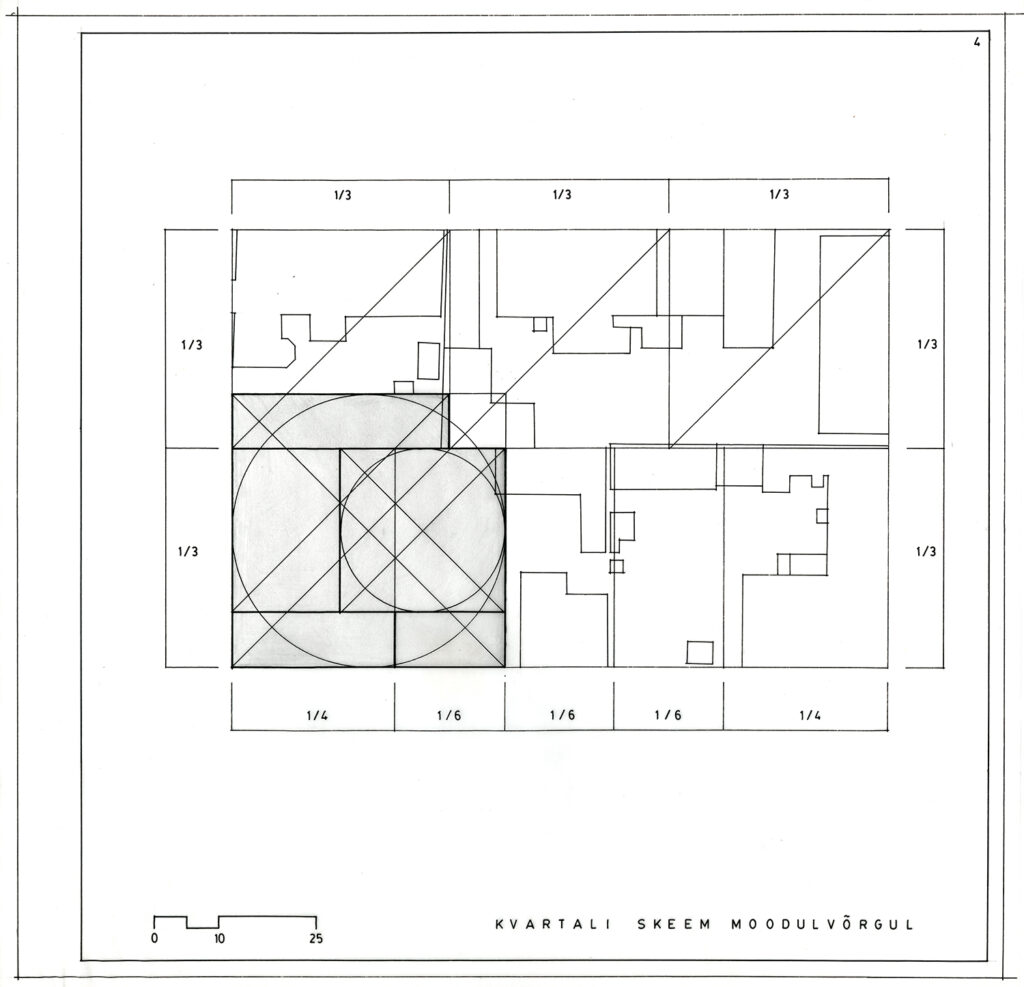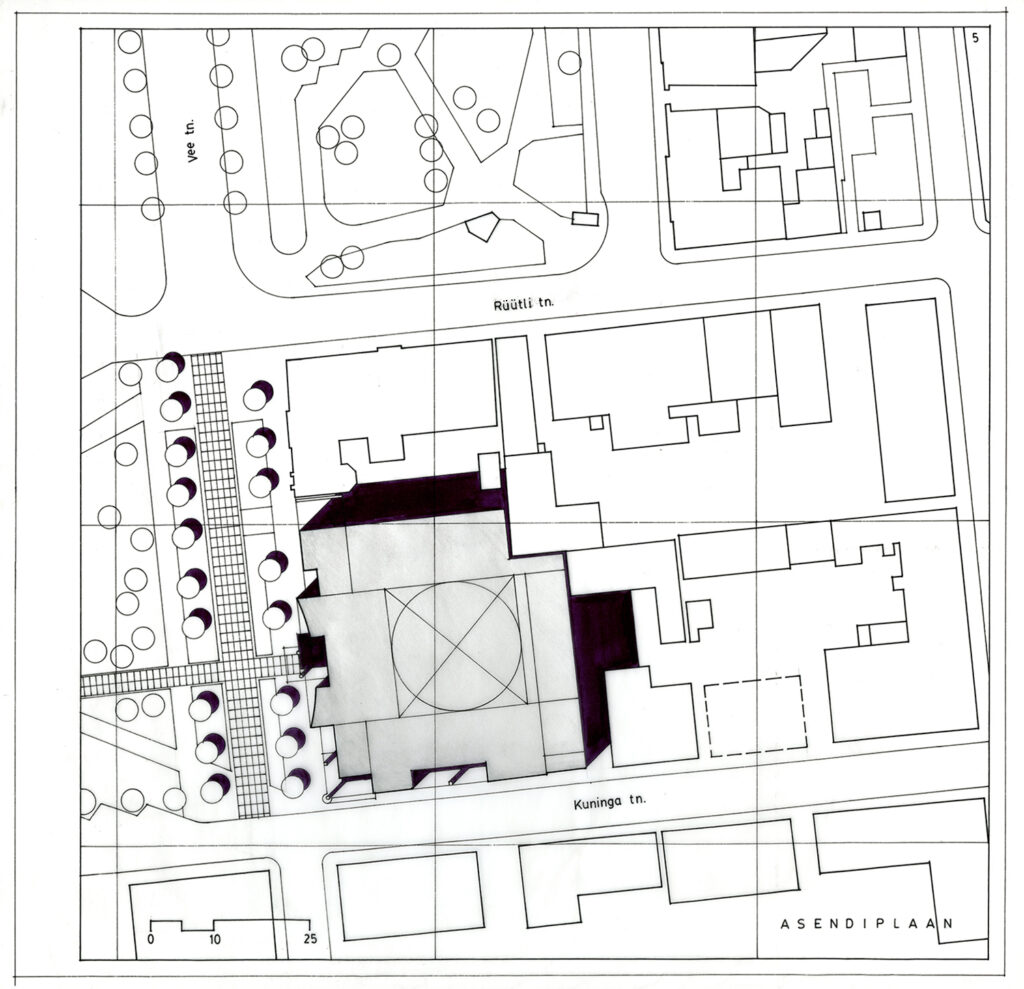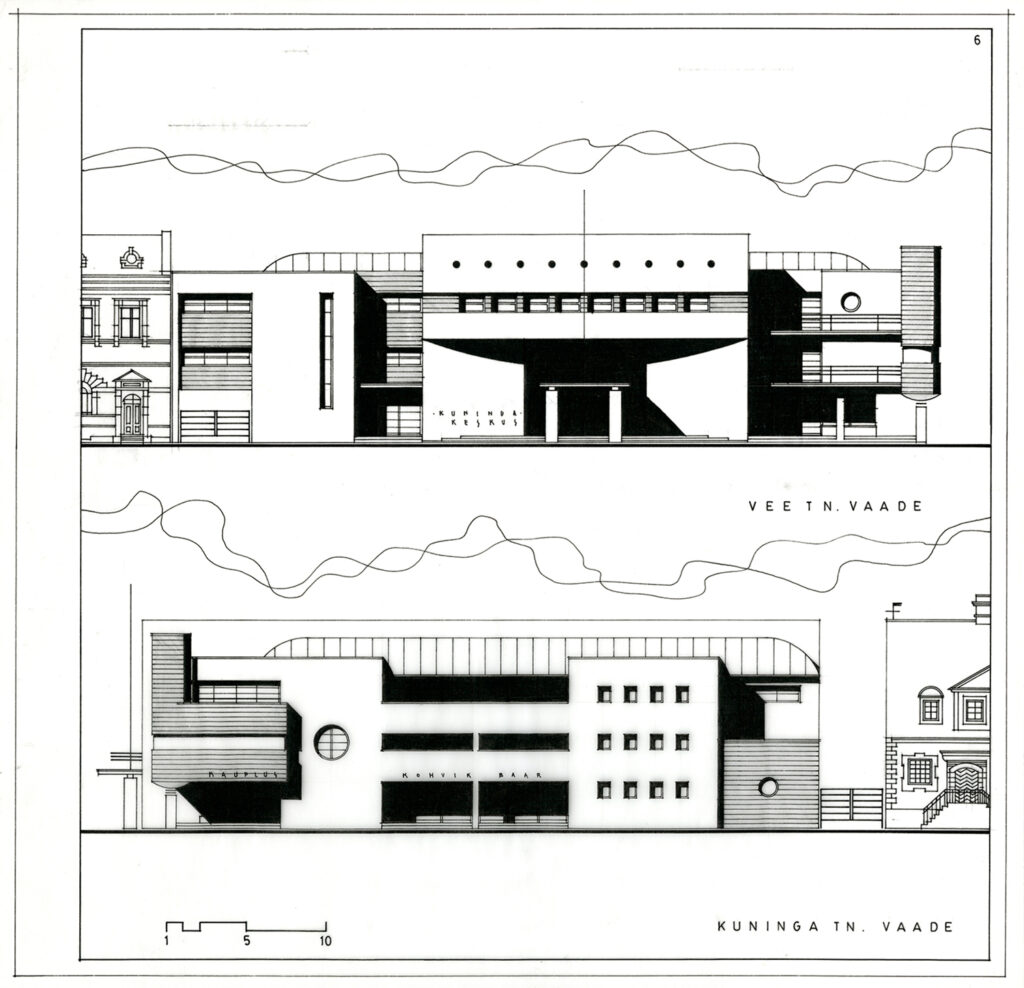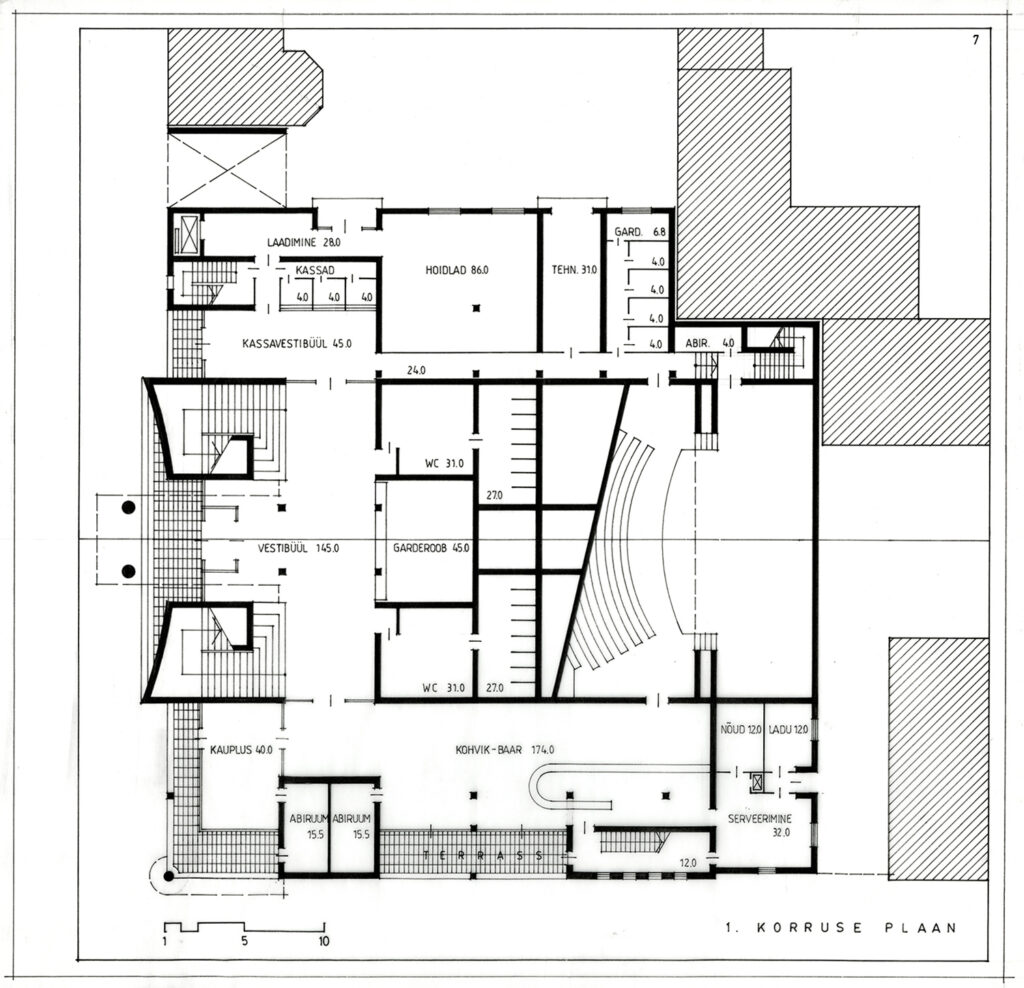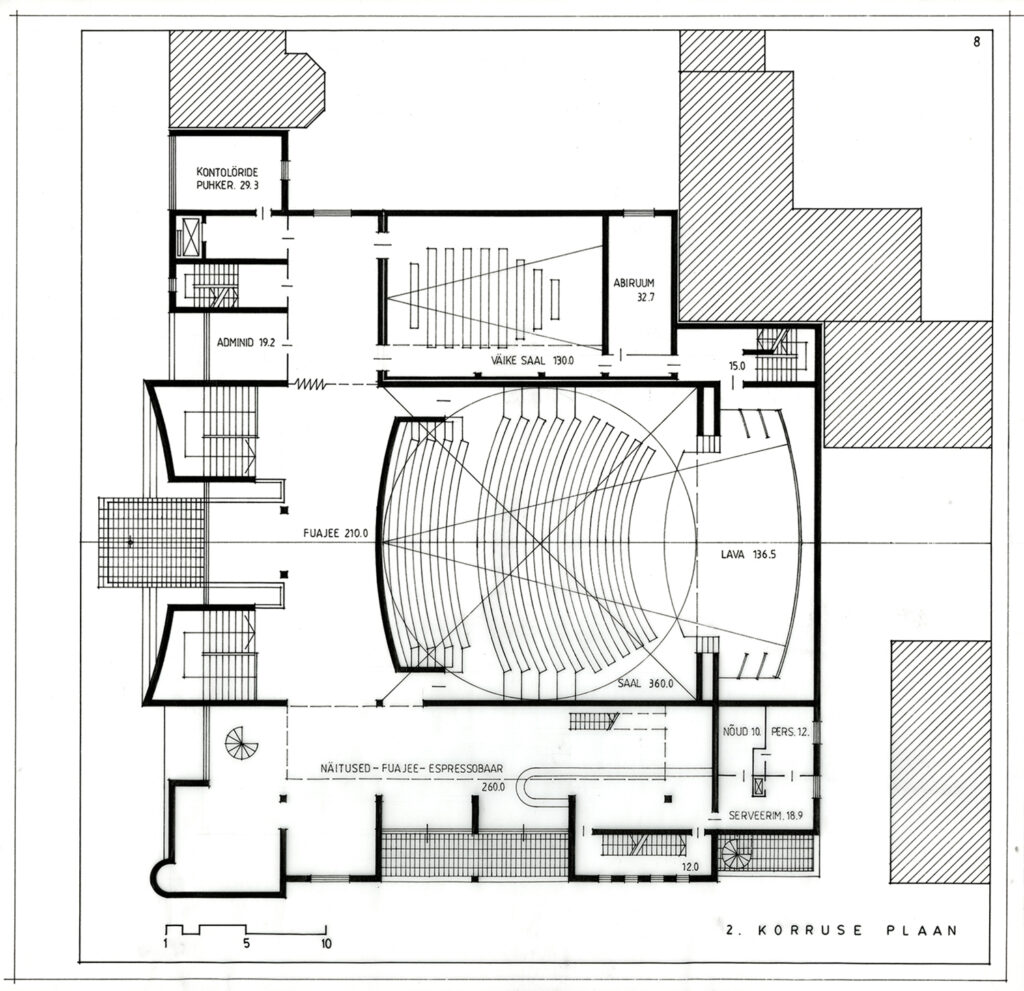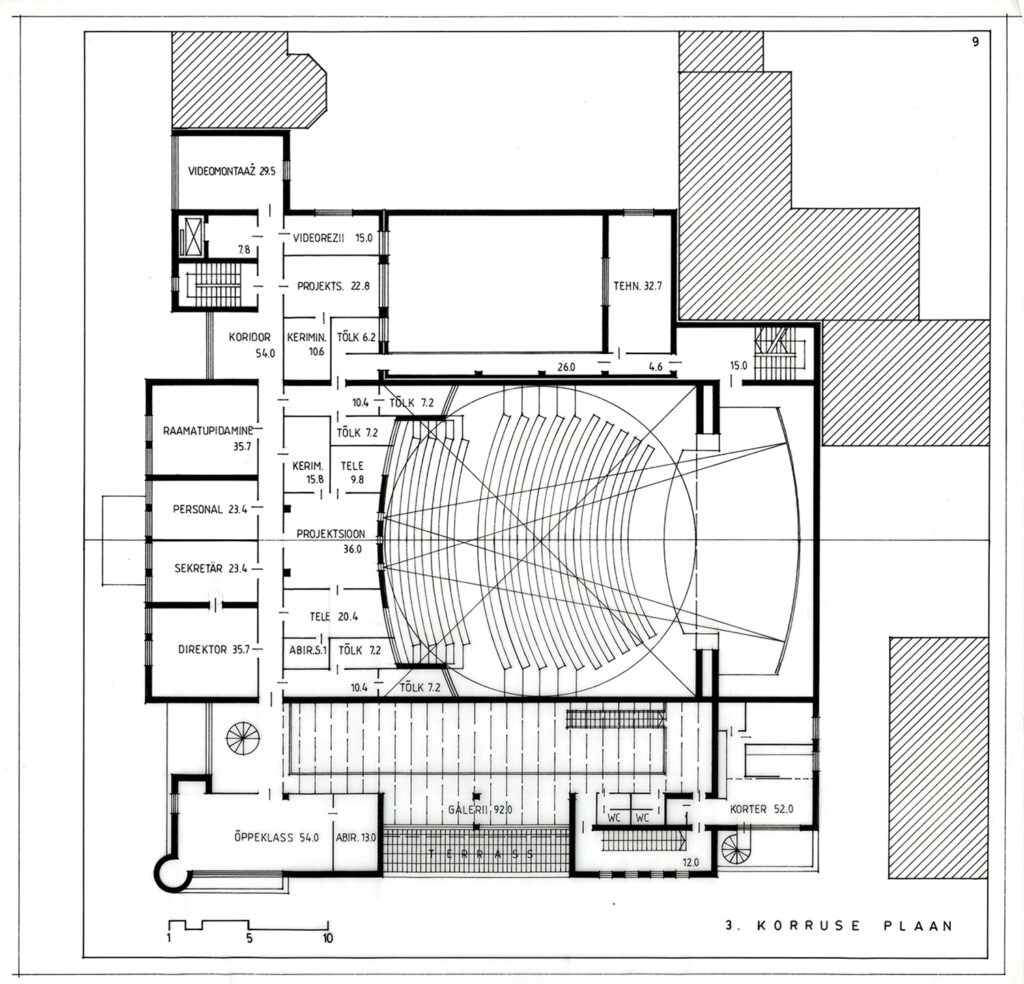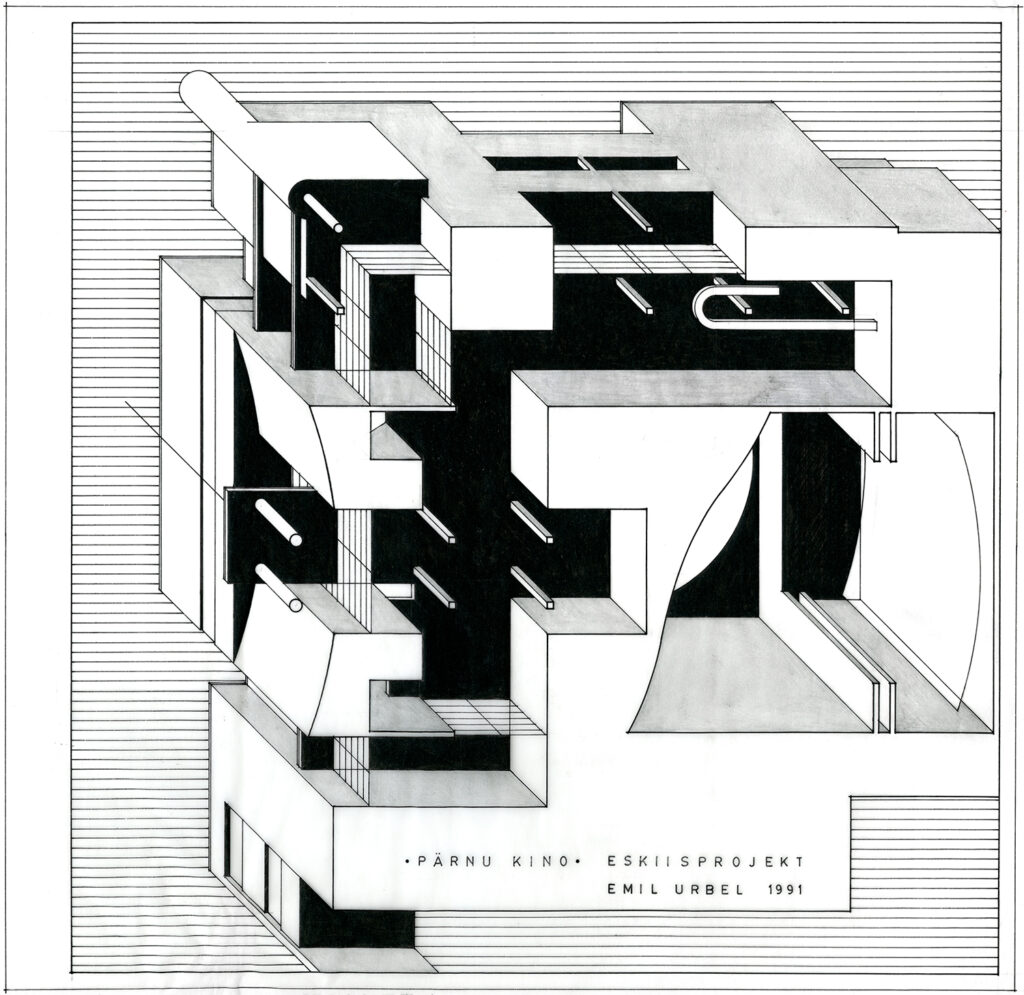Emil Urbel, 1991. EAM 5.4.79
Pärnu cinema
The new cinema project in Pärnu is a fascinating example of architecture that was designed in the 1990s but never built. Designed by architect Emil Urbel, the cinema project entered into a dialogue with the city’s historical architectural tradition, using the modular land-use pattern of Pärnu’s city centre from the late 18th century as a basis for the layout of the neighbourhood and the design of the building. The new building was planned on the site of the Kiir cinema, which was to be demolished due to its obsolescence. The cinema building was to have two auditoriums, the larger with 420 seats and the smaller with 80 seats. Spacious corridors, a larger café and ancillary areas and a larger stage would allow the building to be used more flexibly for different types of events. On the third floor of the building, a housekeeper’s apartment with a separate entrance was planned, as well as a number of technical, office and ancillary rooms. The building was to be finished in white plaster and ceramic tiles, with the use of metal framing and steel detailing characteristic of the period. The area around the cinema on Vee Street was to be transformed into a spacious public space closed to traffic. Text: Anna-Liiza Izbaš
(To see more click on the image)
Andres Alver, Tiit Trummal, 1991. MK 223
Leverex business centre
In 1991, architects Andres Alver and Tiit Trummal designed a business centre on the territory of the former Kalev company on Pärnu road. The office building project, designed for Leverex, is characterised by a clear geometry of form, an articulated facade and a large glass wall surface on one side of the building. The 12-storey building was to include office space, a conference centre, restaurants, cafes, bars and saunas. A helipad was designed on the roof. A shopping centre with a showroom was planned next to the main building. The Leverex business centre is a timeless example of a project designed in the first half of the 1990s but never built. Architect Andres Alver donated the model to the museum in 2016. Text: Anna-Liiza Izbaš
(klick on the picture to see more)
-
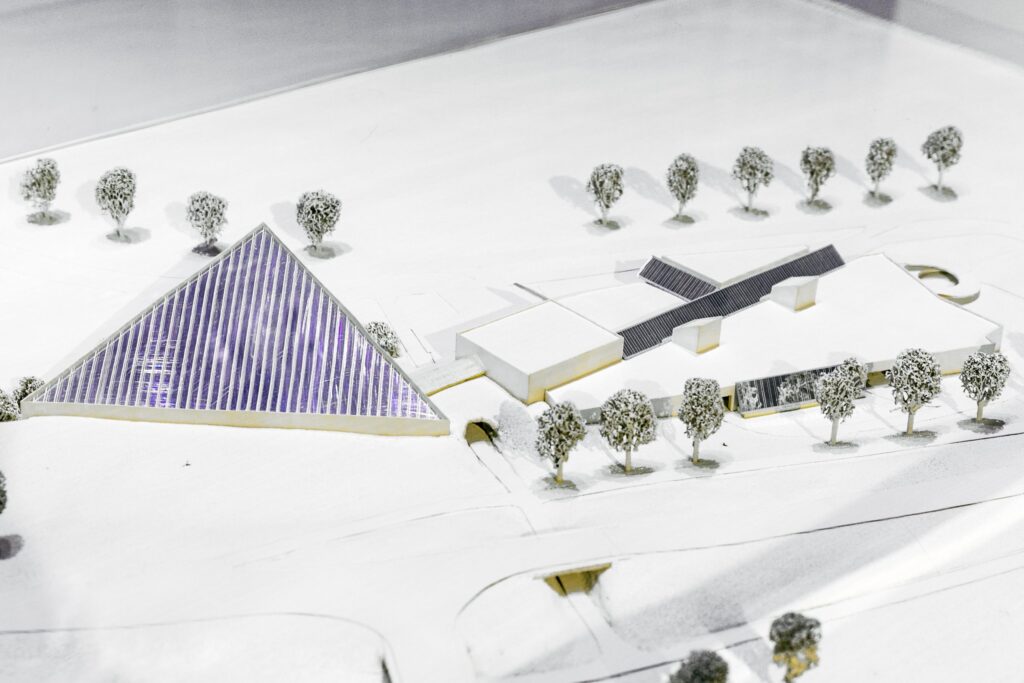
-
Shopping centre in Rovaniemi, Mai Šein
-
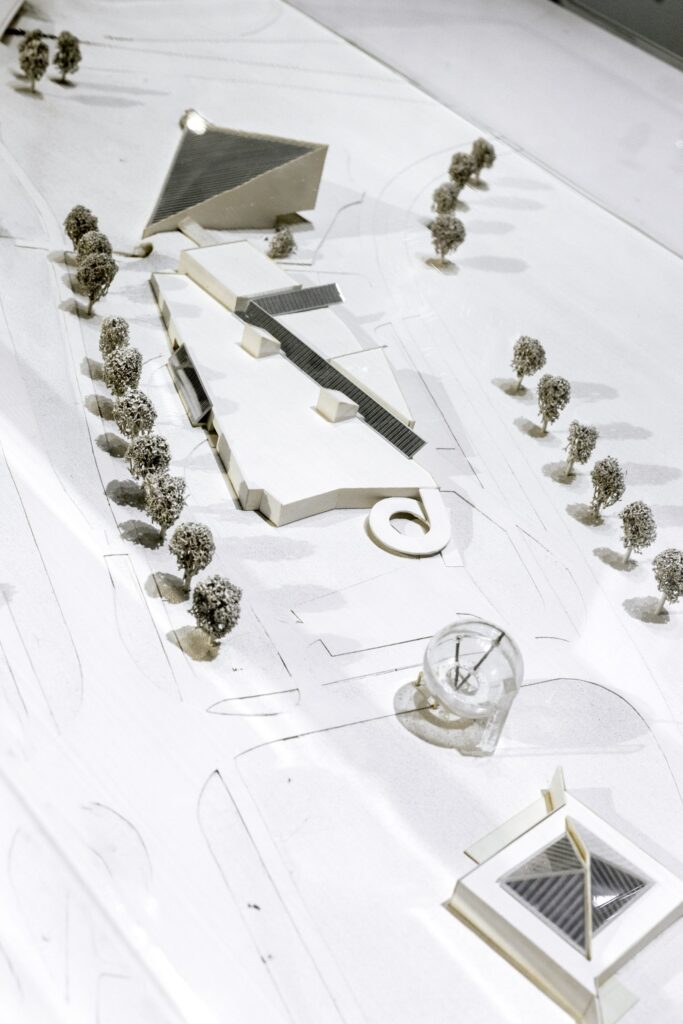
-
Shopping centre in Rovaniemi, Mai Šein
Mai Šein, 1990–1991. EAM MK 251
EMA 30 / Tiny tour of models: Shopping centre for Rovaniemi
In 1990, Rovaniemi County organised a competition for the construction of a shopping centre and hotel complex in Rovaniemi opposite the Arktikum Science Centre across the Ounasjoki River. The centre was intended to house the county government, a hotel, shopping centre and market. The Arctic Circle and Santa Claus Village, a couple of kilometres away, were going to be marked with a special gateway. Architecture firms from Rovaniemi, Oulu and Kemi were invited to participate in the competition. The competition was won by architect Mai Šein, representing the Finnish architectural firm Poskiparta OY. Mai Šein: “I associate Lapland with mountains, so I made a large pyramid-shaped hotel and for the gate I planned a giant openwork globe, positioned above the driveway. The two polar circles were marked; the Antarctic Circle was a footpath for walking along, and the city of Rovaniemi was marked on the Arctic Circle. The adjacent area was an empty site and the participants had to make suggestions about how it could be used. I designed a square building and called it the Nabatorium. A granite wall divided the building diagonally in two – on one side was the South Pole with penguins, on the other the North Pole with polar bears.” Due to an economic downturn, the complex was never built. Mai Šein donated the model to the Estonian Museum of Architecture in 2019. Text: Anne Lass
-
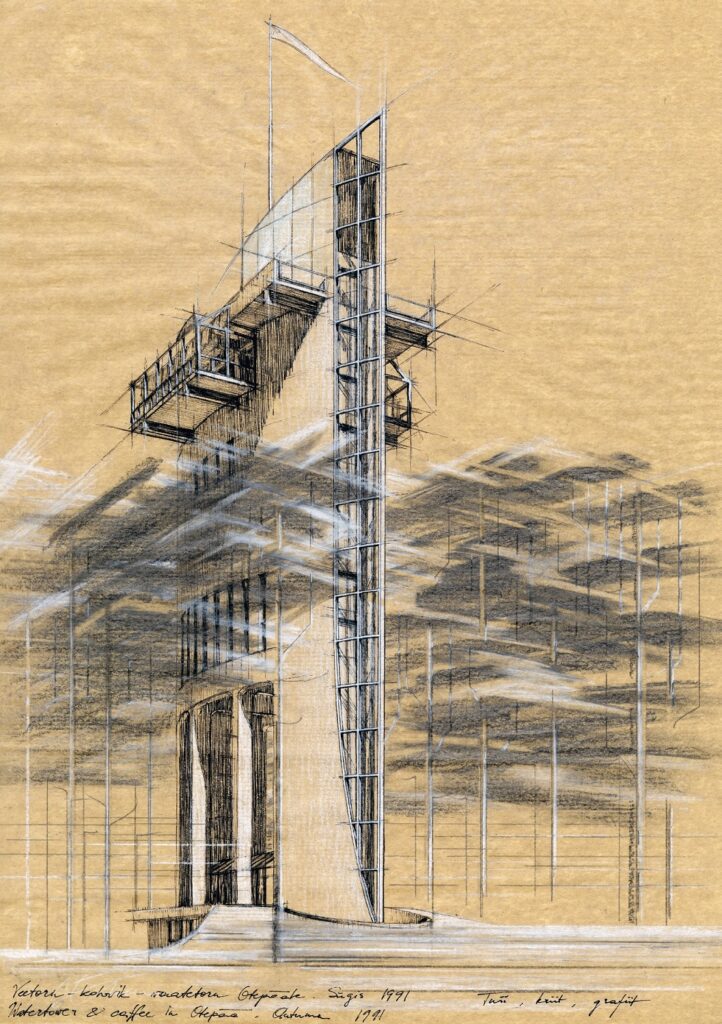
-
Watertower-restaurant in Otepää, Indrek Erm
Indrek Erm, 1991. EAM 5.8.2
Watertower-restaurant in Otepää
Utilitarian buildings were often complemented with a commercial layer in the transitional society of the 1990s when shifting towards a capitalist economy based on the free market. Technically, the arrival of hydrophore tanks meant that water towers were already outdated and economically unpractical on their own. But a café located at the highest place in town with a glass lift taking visitors up would have had an invigorating city-like effect in a small town. The high-tech perspective view drawn by the young architect Erm was part of a preliminary design that was never implemented because the city government changed. The drawing made in ink, chalk and pencil was given to the museum by Indrek Erm along with the project and technical drawings in 2015. Text: Sandra Mälk
-
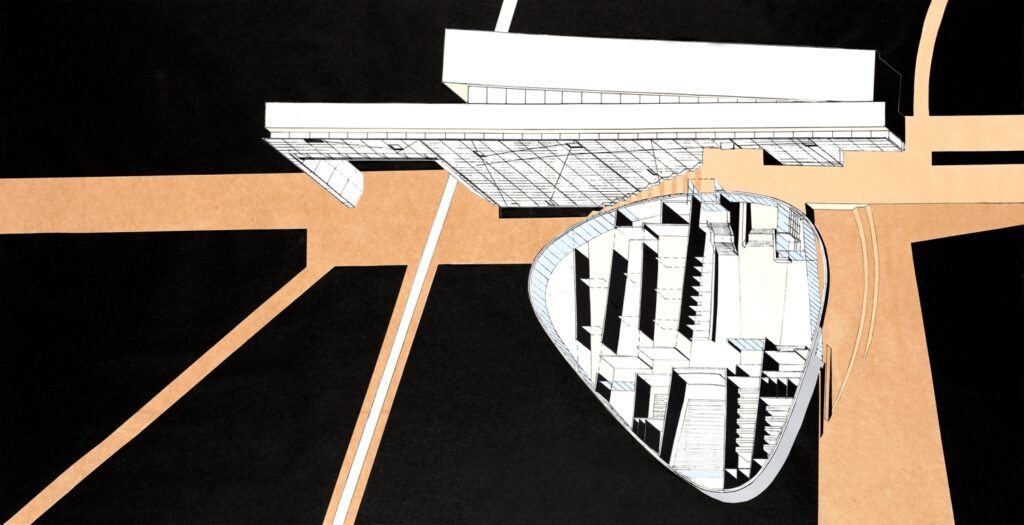
-
Competition entry for KUMU Art Museum
Kalle Vellevoog, Velle Kadalipp, 1994. EAM 5.4.76
Competition entry for the Art Museum of Estonia
Based on the location of the project, the authors of the entry “Pont du Parc” saw an opportunity to bring the two districts – Kadriorg and its Baroque park and Lasnamäe with its Soviet-era panel apartment blocks – closer together. The main volume of the Art Museum stretches across the limestone clint in Lasnamäe, thus bridging the two districts with different historical narratives. The elongated main building houses the majority of the exhibition spaces, whereas the round part was designed for storage and service rooms. An axonometric bird’s-eye view of the building in its topographically unique location highlights the “bridge” message between the two areas. The museum was built according to the winning entry by Pekka Vapaavouri, nevertheless the idea of carving through the limestone has leaked to the design of the memorial to victims of communism in Maarjamäe (Kalle Vellevoog, Jaan Tiidemann, Tiiu Truus). The collage was donated to the museum in 2015 by architect Kalle Vellevoog. Text: Sandra Mälk




